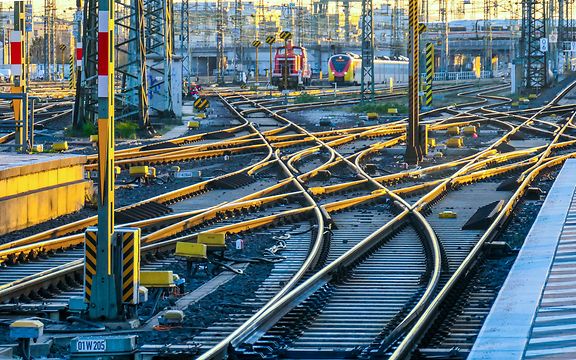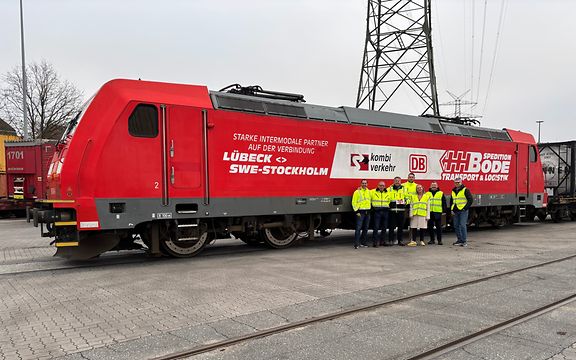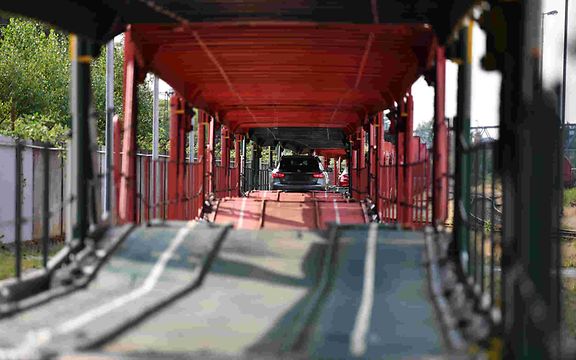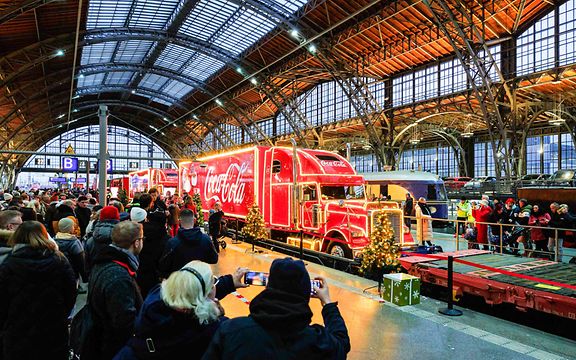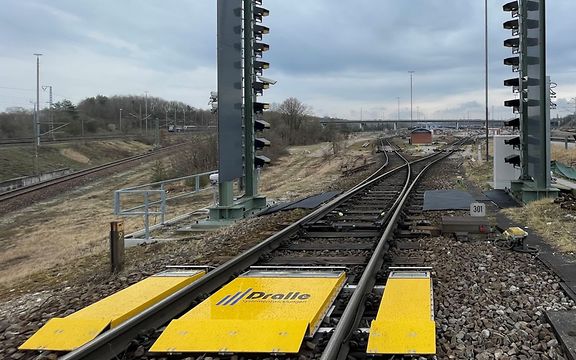Getting more parcels on rail
How German CEP services view rail freight transport: a survey
Every year some 49 million people* in Germany shop online. Clothing, shoes, accessories and sporting goods are among the top items ordered – and shipped. That's more than 15 million items** for parcel services to deliver – every day. And volume is growing. It's a monumental task for the courier, express and parcel (CEP) services.
Parcels are still delivered mostly by lorry. But if Germany is to meet its climate targets by 2040, people will need to change their thinking and shift more transport to rail. To find out what its CEP customers think, DB Cargo asked them where they see the biggest advantages and challenges involved in shipping by rail. Three of Germany's biggest parcel services took part in the survey: DHL, DPD and UPS.
Countering the shortage of drivers
There was one thing all agreed on: their own climate targets, and those for Germany, can be better met by rail than by lorry. In rail transport, they mainly saw benefits in reduced CO2 emissions, lower energy consumption, and less road traffic. But another factor was also noted by all of the CEPs: the shortage of skilled workers. According to the BGL (National Association for Freight Transport, Logistics and Waste Disposal), Germany faces a shortage of 80,000 to 100,000 qualified drivers.*** Shifting to rail would be an effective way to counter this shortage, as a freight train can replace up to 52 HGVs.
Other benefits cited were cutting costs (e.g. road tolls), using another carrier's existing resources, pooling synergies, and predictable traffic flow on rail.
A reliable logistics partner
The parcel companies were also asked which aspects of their cooperation with DB Cargo and Kombiverkehr KG were most important to them. Reliability topped the list, followed closely by eco-friendliness. Customised transport concepts and good advice from sales staff also played a role.
Focus on logistics sites and accessibility
The last question concerned the companies' site planning. In this regard, DB Cargo and Kombiverkehr were most interested in finding out whether the parcel companies are planning to site their facilities based on closeness to CT terminals for a direct connection to climate-friendly rail transport.
Their responses varied. For most CEP services, though the sustainability aspect plays an important role in their site planning, they see more opportunities in how their sites are equipped, for example in the energy efficiency of a site's buildings and transport systems. Other important factors involved in site selection include the availability and profitability of logistics sites and their accessibility by road. As to the closeness of their sites to a terminal for combined transport, most of those surveyed had an opposing perspective in which the future development of CT terminals is more strongly aligned with proximity to large freight transport centres.
Sources:* https://www.destatis.de/DE/Presse/Pressemitteilungen/2021/12/PD21_578_63.html** https://www.biek.de/presse/meldung/kep-studie-2022.html*** https://www.timocom.de/blog/personalmangel-bei-lkw-fahrern-231732
